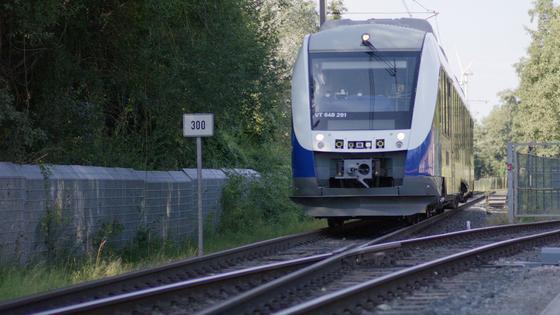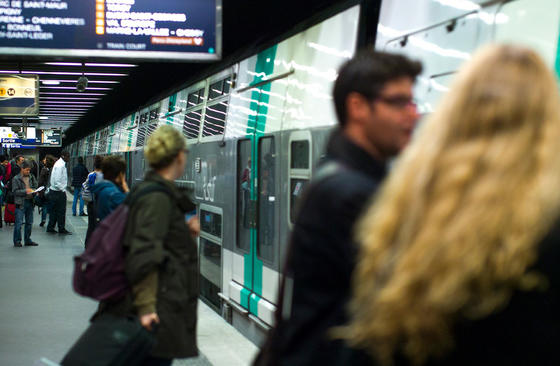
Alstom pioneers Automated Regional Trains

Press contact - Philippe Molitor
Philippe Molitor
Send an email-
The ARTE Project is set to revolutionize the rail network by implementing automated train operations (ATO) using the European Train Control System (ETCS).
-
The initiative presented today focuses on existing rail lines, ensuring a seamless transition to modernized operations.
-
Joint project of Alstom, LNVG, TU Berlin and DLR with funding support from the German Federal state and the Land of Lower Saxony
23 September 2024 – Alstom, global leader in smart and sustainable mobility, presented today in Salzgitter, Germany, the ARTE (Autonomous Regional Train Evolution) project. The ARTE Project is a joint research project of Alstom, the German Aerospace Center (DLR) and the Rail Operations and Infrastructure Department at TU Berlin with funding support from the Federal Ministry for Economic Affairs and Climate Action and Lower Saxony’s Ministry of Economics, Transport, Building and Digitalisation. The Landesnahverkehrsgesellschaft Niedersachsen (LNVG) is providing two regional trains for the tests. The project is set to decisively support the digitalisation of the German rail network through implementing automated train operations (ATO) using the European Train Control System (ETCS) without the need for additional trackside equipment. As Alstom is working towards fully leveraging automation, this initiative focuses on existing rail lines, ensuring a seamless transition to modernised operations.

“As we stand on the brink of a new era in rail, the embrace of driverless systems heralds a future where trains operate seamlessly, cities thrive, and communities connect like never before”

ARTE - Pioneering automated regional trains
Read moreThe ARTE project is intended to show how accompanied, automated train operation can be implemented in today’s rail network by retrofitting the vehicles. Automated driving requires camera systems for obstacle detection, and instead of trackside ETCS equipment, a suitable image recognition system processes the existing railway signals. Today in Salzgitter, a delegation of international press was able to travel a few kilometres in autonomous mode , meaning without the intervention of a driver. They were also able to witness remote train operation (RTO) using a tablet. RTO serves as a fallback solution to regain manual control of a train without a driver on board.
“As we stand on the brink of a new era in rail, the embrace of driverless systems heralds a future where trains operate seamlessly, cities thrive, and communities connect like never before”, said Florian Kittelmann, Alstom Autonomous Mobility Director. “In the evolving landscape of transportation, driverless technology is more than a trend, it represents a revolution. While discussions often highlight autonomous vehicles, the potential of driverless rail transport is equally transformative”.
Remote Train Operation
Thanks to Remote Train Operation (RTO) systems, operators would be able to control trains remotely. And either from the depot or from a dedicated remote driving station, they would then be able to take control of the train and drive it to the next station. In the case of RTO, the ARTE project is providing a very simple solution – a tablet which is linked in with the train control.
So, operators would always see the live transmission of the camera in front of the train, providing the remote driver with the same kind of visibility the actual driver would have. They can break the train, and they can accelerate the train, remotely.
The DLR supports this by analysing and evaluating the findings on a stakeholder-specific basis in order to define new roles and tasks for the operating personnel as well as opportunities for their qualification. The objectives of TU Berlin are to develop and test an easy and flexible mobile remote control and making sure that safety requirements are fulfilled and approval of the assessment bodies is obtained.
“If we look at the RTO project, we have on purpose taken a train which already has a couple of years under its belt, and we have implemented leading edge technology,” said Florian Kittelmann. “That allows us to demonstrate our ability to basically upgrade any train in the world from manual to automated operation.”
The Promise of Driverless Rail
Driverless trains are becoming increasingly viable thanks to advancements in artificial intelligence, sensor technology, and connectivity. These innovations present a chance to reshape the safety sustainability, and operational efficiency of public transit. They can also support economic growth.
- Safety: Driverless systems provide an opportunity to enhance safety dramatically by minimising human involvement, significantly reducing the risk of errors. Autonomous trains continuously monitor their environment, respond swiftly to obstacles, and comply with stringent safety protocols.
- Sustainability: The ‘European Green Deal’ aims to achieve a reduction in greenhouse gas emissions by at least 55% compared to 1990 levels by 2030, underscoring the necessity of adopting innovative technologies like driverless rail transport to meet sustainability targets.
- Operational Efficiency: Autonomous trains can operate around the clock without the downtime that traditional systems require, resulting in reduced operational costs and enhanced service quality.
- Economic Growth: Efficient rail systems play a crucial role in economic growth. Countries like China and India are investing heavily in their rail infrastructure, recognizing that modern, reliable rail services can drive economic development and enhance connectivity.
Alstom™ is a protected trademark of the Alstom Group.





